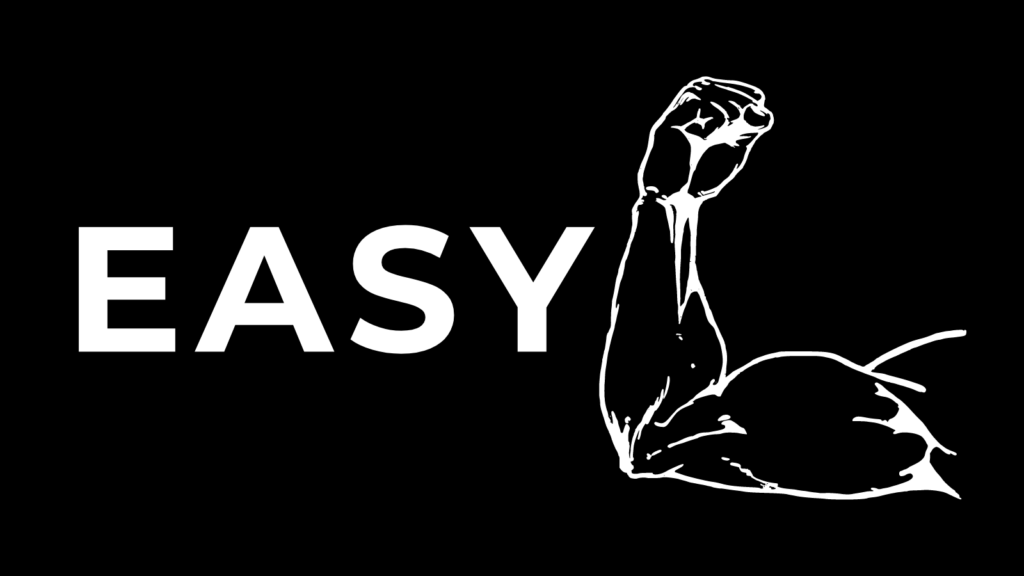When I first started working out 10 years ago, I thought building muscle was all about heavyweights, complicated routines, and punishing myself with endless reps. I quickly learned that not only is that approach unsustainable—it’s not even necessary. The truth? You can get stronger, build muscle, and transform your body without stepping foot in a gym. All you need is your bodyweight, the right mindset, and a few key principles that I’ve learned the hard way.
Whether you’re just starting out or have been at it for a while, I’m here to share the lessons I’ve picked up so you can avoid the mistakes I made, skip the fluff, and focus on what really works. My journey taught me that fitness is simple. Keep it fun, stay disciplined, and most importantly, master the basics—starting with calisthenics.
Why Calisthenics?
I’ve always been drawn to calisthenics because it’s so accessible. You don’t need a gym, expensive equipment, or a complicated schedule. You can start right where you are—at home, in a park, or anywhere you have space to move. Calisthenics keeps it simple while building serious strength and muscle. And the best part? It doesn’t require anything but your body and your willingness to show up.
There’s a certain freedom in being able to train anywhere, anytime. It strips fitness down to the essentials: just you, your body, and gravity. Plus, it’s a no-cost way to get fit—no gym memberships or pricey equipment required.
14 Key Lessons from a Decade of Bodyweight Training
1. Keep It Simple and Fun
When I started out, I was overwhelmed by information. Should I be doing split routines? How many sets are enough? The reality is, building muscle doesn’t require fancy routines. I discovered that a simple, enjoyable workout routine made it easier to stay consistent. With calisthenics, you don’t need complicated equipment or endless variations. Push-ups, pull-ups, crunches, and squats can give you all the muscle you need—if you stay consistent.
Why overcomplicate things? By keeping it simple, I actually started to look forward to my workouts rather than dread them.
2. Form Over Reps, Always
Early on, I was chasing numbers—more reps, more sets. But over time, I learned the value of mastering form. You’re better off doing five well-executed push-ups than rushing through 20 with sloppy technique. I remember the moment it clicked: I was struggling to crank out a set of pull-ups when I realized that my form was all over the place. I slowed down, focused on doing them right, and not only did I feel more in control, but I saw better results.
Not only does proper form prevent injury, but it also ensures you’re working the right muscles and getting the most out of each movement.
3. Know Your ‘Why’—It’s the Key to Staying Disciplined
Motivation comes and goes, but discipline is what gets you results. I realized that having a strong reason why I wanted to build muscle kept me going, even when I didn’t feel like training. Whether your goal is to look better, feel stronger, or just prove to yourself you can do it, knowing your ‘why’ helps turn short-term motivation into long-term discipline.
There will be days when you don’t want to work out. That’s where your “why” comes in. For me, it was more than just aesthetics—I want to be strong enough to protect my family. What’s your why?
4. Progressions for Key Calisthenics Movements
One of the things I love about calisthenics is how scalable it is. When I started out, I didn’t dive straight into advanced exercises. I worked my way up, and the beauty of bodyweight training is that you can always adjust the difficulty level as you get stronger. For each key movement, I followed specific progressions that helped me build muscle and strength at my own pace. Here’s how I broke it down:
- Pull-Up Progression: Assisted pull-ups → Negative pull-ups → Full pull-ups → Weighted pull-ups
- Push-Up Progression: Knee push-ups → Regular push-ups → Decline push-ups → Plyometric push-ups
- Squat Progression: Box squats → Regular squats → Jump squats → Pistol squats
These progressions are your roadmap. I started small and celebrated every milestone, like finally moving from knee push-ups to full push-ups. Start where you are, and with consistency, you’ll see steady improvement.
5. Discipline Becomes Habit Over Time
At first, showing up to work out felt like a grind. I won’t lie—there were days when I’d do anything to skip it. But I stuck with it, even on the days I didn’t feel like it. Over time, that discipline became habit. Working out became second nature. The key? Show up, even when you don’t feel like it. Eventually, it gets easier.
One day, you’ll wake up and realize it’s not about motivation anymore—it’s just what you do.
6. Warming Up and Cooling Down are Non-Negotiable
In the early days, I’d jump straight into my workout and skip stretching afterward. Big mistake! Your muscles need to be prepared for the work ahead, and they need time to relax afterward. I learned this the hard way after dealing with muscle strains that could have been avoided. A simple warm-up like arm circles, bodyweight squats, and leg swings (5-10 minutes) helps prevent injuries. Afterward, cooling down with static stretches (like hamstring stretches or shoulder stretches) improves flexibility and speeds up recovery.
Trust me—don’t skip this part. It only takes a few minutes, but it can save you weeks of recovery time.
7. No Routine Can Outwork a Bad Diet
I used to think that as long as I worked hard, I could eat whatever I wanted. But the truth is, nutrition is just as important as the workout itself. If you want to build muscle, you need to fuel your body properly. After months of wondering why I wasn’t seeing the gains I expected, I took a hard look at my diet. That’s when everything changed.
Simple high-protein meals with healthy fats, vegetables, and clean carbs will make all the difference. Want results? Focus on what you’re putting into your body, not just what you’re doing with it.
8. Don’t Forget to Breathe
It sounds basic, but learning to breathe properly during workouts was a game changer for me. I used to hold my breath during challenging exercises, which made them harder and less effective. Once I learned to control my breathing, I noticed a huge difference in my stamina and performance.
It’s simple: inhale on the easier part of the movement, exhale on the hard part. You’ll be surprised at how much stronger you feel when you get this right.
9. The Mental Benefits Are Just as Important as the Physical
For me, calisthenics hasn’t just been about building muscle—it’s helped build mental toughness. There’s something about pushing your body through your own resistance that builds resilience. Every time I broke through a physical plateau, I gained mental strength, too.
On tough days, even a short, focused workout clears my mind. It’s like therapy—except it’s free, and you leave with stronger muscles.
10. Flexibility Matters More Than You Think
For years, I ignored flexibility. I thought stretching was something that didn’t matter when building muscle. But as I got stronger, I realized how important flexibility is, not just for preventing injuries, but for helping muscles grow. Incorporating stretches into my routine allowed me to perform exercises with a greater range of motion and recover faster.
Don’t be that guy who can bench a ton but can’t touch his toes. Flexibility is strength in disguise.
11. A Realistic Timeline for Results
When starting out, I expected quick results. I thought I’d see dramatic changes in weeks. Spoiler alert: I didn’t. Real muscle growth and strength gains take time. If you’re just getting started, expect to see noticeable progress in around 8-12 weeks with consistent training and good nutrition.
Be patient. Keep showing up. The results will come.
12. Sometimes, Your Body Just Needs Rest
Hitting a plateau can be frustrating. I remember the first time I hit one—no matter how hard I trained, I wasn’t improving. My solution? Push harder. Rookie mistake… It wasn’t until I gave myself a full week off that I realized how crucial recovery is. Sometimes, your body just needs rest to grow.
Don’t be afraid to take a break—it can be the thing that pushes you to the next level.
13. Staying Hydrated is Key
Hydration is something I overlooked early on, but it’s essential. Your body needs water to perform at its best—whether you’re working out or recovering. I learned the hard way when I started feeling fatigued halfway through my workouts. The problem? I wasn’t drinking enough water.
Now, I aim to stay hydrated throughout the day, not just during workouts. Keep a water bottle nearby—you’ll thank yourself later.
14. Rest Between Sets is Necessary
I used to think powering through a workout with minimal rest would get me better results.
But training smarter, not harder, is the key. Taking 1-2 minutes between sets gives your muscles enough time to recover and perform their best in the next round. Remember, the goal is quality over quantity.
Work hard, but don’t forget to rest—you’ll see better gains in the long run.
My Simple Calisthenics Routine
This is the routine I’ve been following for years. It’s simple but effective, and it’s all about using my body weight to build muscle and strength. I’ve split my workouts into two alternating days: one focused on pull-ups & squats, and the other on push-ups & crunches. I stick to the basics, always focusing on good form, and I make sure to rest between sets to give my muscles the recovery they need.
Monday/Wednesday/Friday: Pull-Ups & Squats
1. Pull-Ups (Back, Biceps, Forearms)
- Beginner: 3 sets of 3-5 reps (Assisted pull-ups if needed)
- Intermediate: 4 sets of 6-8 reps
- Advanced: 5 sets of 8-12 reps (Add weight if possible)
Rest: 120 seconds between sets
2. Squats (Legs, Glutes, Core)
- Beginner: 3 sets of 12-15 reps (Bodyweight squats)
- Intermediate: 4 sets of 15-20 reps
- Advanced: 5 sets of 20-30 reps (Try pistol squats for a challenge)
Rest: 60-90 seconds between sets
Tuesday/Thursday/Saturday: Push-Ups & Crunches
1. Push-Ups (Chest, Shoulders, Triceps)
- Beginner: 3 sets of 8-10 reps (Knee push-ups if needed)
- Intermediate: 4 sets of 12-15 reps
- Advanced: 5 sets of 20+ reps (Consider diamond or decline push-ups for extra difficulty)
Rest: 60 seconds between sets
2. Crunches (Core)
- Beginner: 3 sets of 15-20 reps
- Intermediate: 4 sets of 20-25 reps
- Advanced: 5 sets of 30 reps (Add a twist for oblique engagement)
Rest: 30-45 seconds between sets
Sunday: Rest Day
I make sure to fully rest on Sundays. It’s my time to let my muscles recover so I can come back stronger the next week. If I feel the need to move, I’ll do some light stretching, go for a walk, or do a bit of yoga. But mostly, it’s a day to recharge.
Final Thoughts
So what are you waiting for? I’ve learned that building muscle doesn’t need to be complicated. By keeping it simple, staying consistent, and focusing on form, I’ve seen results—and you can too. You’ll be amazed at what calisthenics can help you achieve.
You got this.
Enjoyed this letter? If you found these tips helpful and want more insights, workout routines, and motivation straight to your inbox, be sure to subscribe to my newsletter! And don’t forget to follow me on X @Lucas_Mouniama_ for daily tips on how to make your life more enjoyable and fulfilling.
Thank you so much for reading my letter — it means a lot to me.
See you next week,
- Lucas

